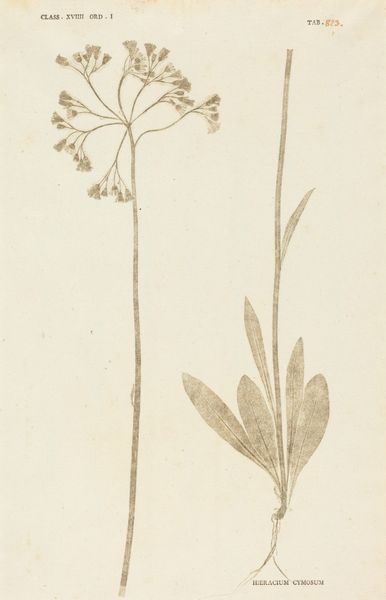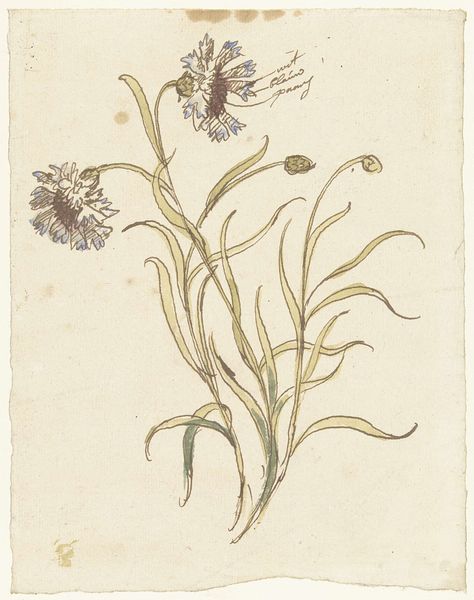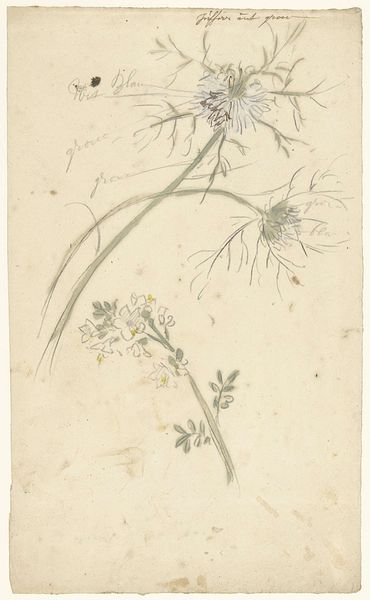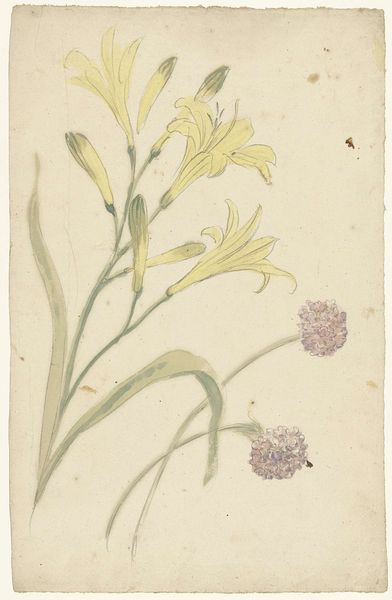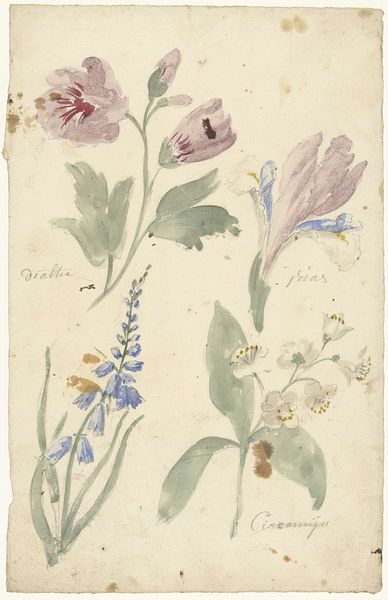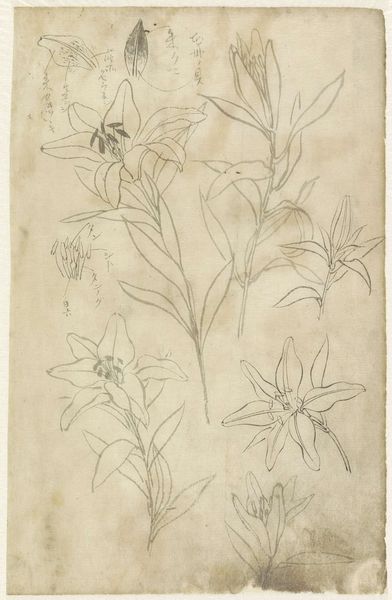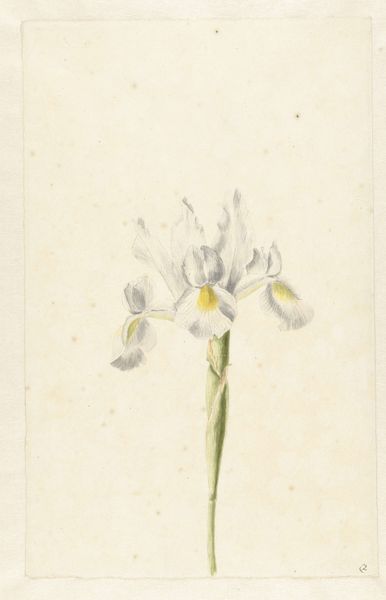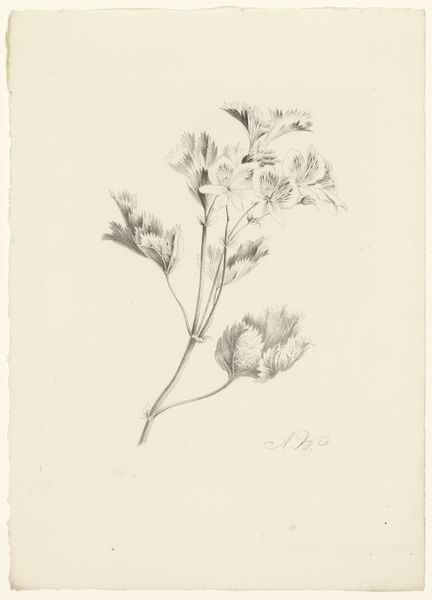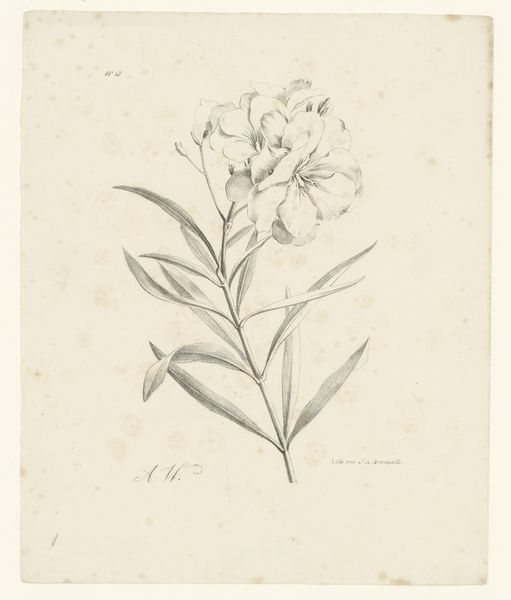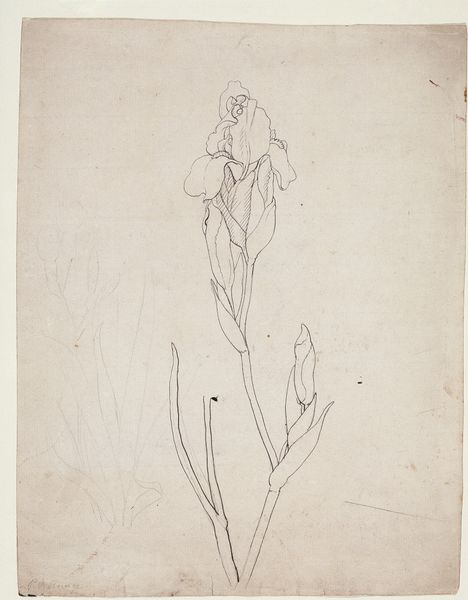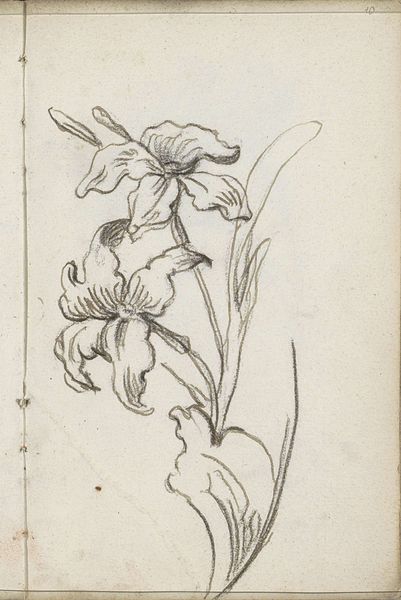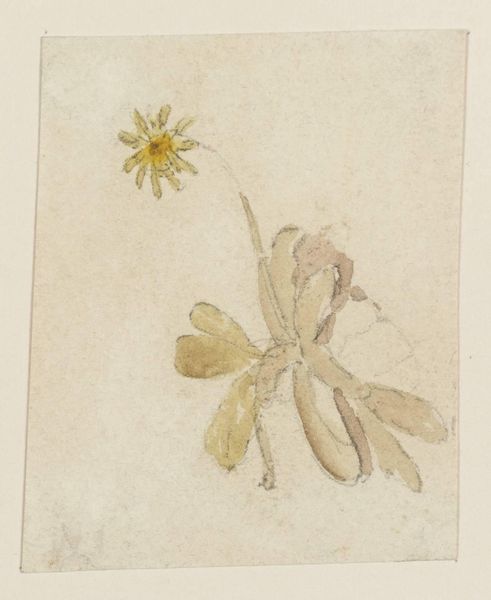
drawing, watercolor, pencil
#
drawing
#
dutch-golden-age
#
etching
#
watercolor
#
pencil
#
realism
Dimensions: height 330 mm, width 211 mm
Copyright: Rijks Museum: Open Domain
Elias van Nijmegen rendered this delicate white lily with graphite and watercolor sometime between 1667 and 1755. As a Dutch artist, his social context was one of burgeoning mercantile power, and a new sense of national identity that emerged from a long struggle for independence from Spain. The art market in the Netherlands was unique in Europe for its scale and the way it involved the middle classes. Artists like Van Nijmegen catered to this market, producing affordable works for domestic settings. Botanical drawings like this one were highly valued, as they reflected the scientific interests of the time. They also alluded to religious symbolism - the white lily can be associated with the Virgin Mary - and the fashion for collecting exotic plants, a sign of wealth and worldliness in Dutch society. To fully appreciate this drawing, one might explore Dutch emblem books and botanical treatises from the period, discovering the rich layers of meaning that would have been apparent to its contemporary viewers.
Comments
No comments
Be the first to comment and join the conversation on the ultimate creative platform.
